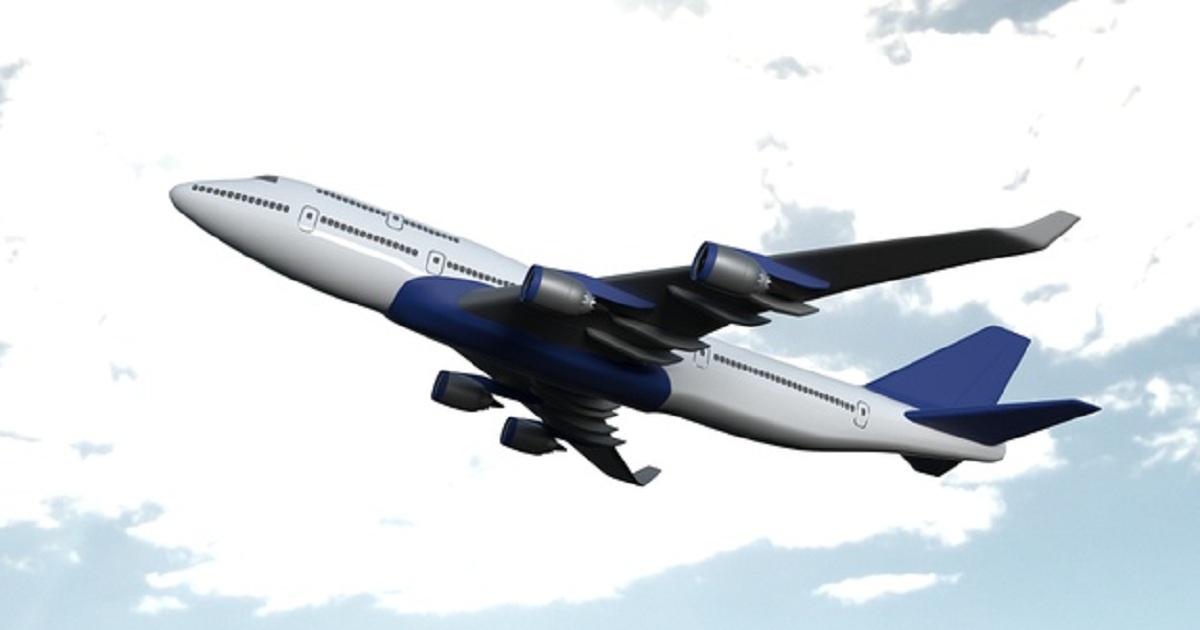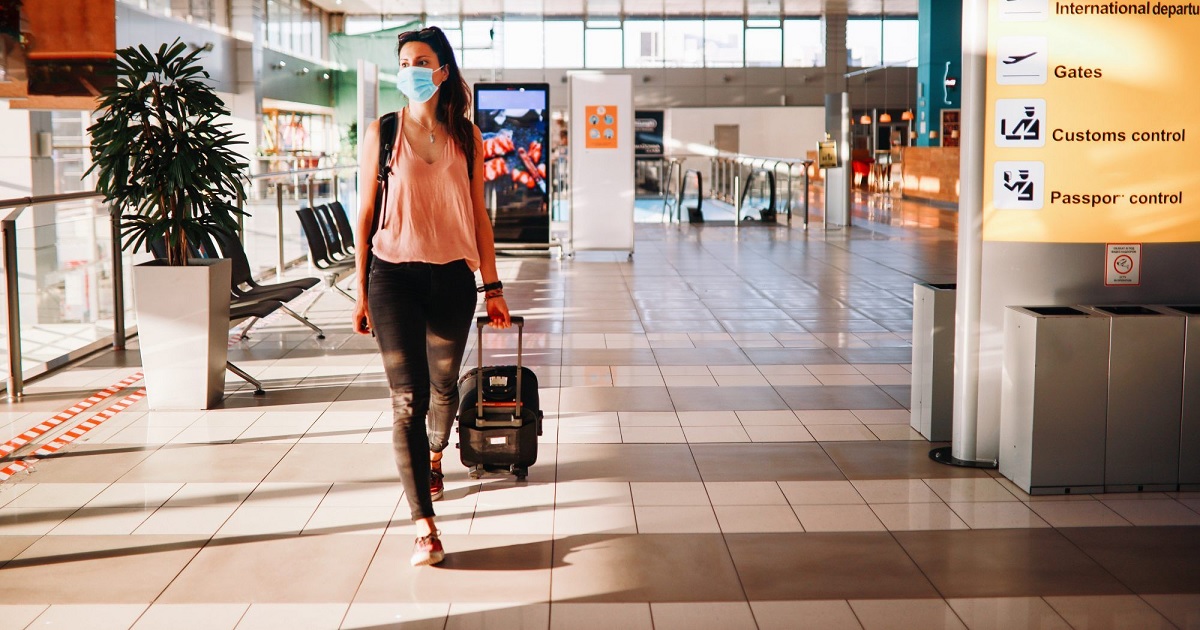
Defense and Space
Article | June 8, 2022
The UK government has announced that from 11th February, fully vaccinated passengers arriving into the country will no longer have to take COVID-19 tests on arrival. The news follows the removal of pre-departure testing for fully vaccinated UK-bound passengers this month.
The relaxation of testing measures is something the aviation industry has been actively campaigning for, as it removes barriers to travel. Just today, IATA distributed a press release advocating for similar moves to be made by further governments. It cited a study focused on the UK carried out by Oxera and Edge Health which found that because Omicron is now highly prevalent in the UK, “if all travel testing requirements were removed there would be no impact on Omicron case numbers or hospitalizations.”
Read More

Design and Engineering
Article | January 7, 2022
There’s been a lot of talk lately about airlines around the world beginning to favor smaller aircraft. Not just amid the pandemic but for the foreseeable future as well. The debate was given fuel when Lufthansa’s CEO made comments about potential down-gauging of its fleet ahead. But have we really entered the era of smaller airplanes for good?
Many have argued that even when demand for air travel does return there will be less of it overall because of a precipitous and permanent drop in business travel. And beyond that, even where demand does exist, it will be for convenient, point-to-point service, not on A380s via big hubs – as smaller planes emerge that are capable of flying farther and people shy away from big, crowded airports and the hassle of connecting. All of which calls for smaller planes. I’ve argued recently that this seems a little hasty. Nevertheless, the jury is out, and as they say – only time will tell.
Have smaller planes taken over flying?
One thing we can look at is whether the notion that smaller planes rule the day holds true at major airlines right now. And pulling some Flightradar24 data we can see that this has been happening – mostly. The headline takeaway seems to be that bigger planes do still have their place, but for obvious reasons smaller wide-bodies have proven more desirable on many global routes during the past year.
Lufthansa dropped its Very Large Aircraft quickly
If we look at Lufthansa’s data, the trend is very clear right from the beginning of the pandemic. The A380 and the 747s (both -400 and -8I) took a definitive hit beginning in March 2020. That was it for the A380 and the 747-400 for good, it seems. The small rebound in A380 flights recorded in recent months were storage-related. And since the pandemic started, it’s clear that the smaller A330 has been clearly favored, taking up nearly double the percentage of flying it had at Lufthansa pre-pandemic.
What’s most interesting here is that the 747-8I did come back, in some weeks to pre-pandemic levels. That’s quite a big plane. It is probably hard to fill these days. But it is Lufthansa’s flagship now – it has a First Class cabin and it can carry quite a bit of cargo. As a result it kept flying for a while on the bigger US routes like LAX. However recent dips in demand, and the winter season, saw the smaller and more fuel-efficient A350 come in to replace it on many routes. As I write this the Lufthansa 747-8I is in flight on just two routes – Mexico City (MEX) and Buenos Aires (EZE) to Frankfurt (FRA).
If I were to take a guess, I’d say we continue to see the 747-8I for some time on these bigger routes and in busier seasons. It may turn out to be one of the last options for passengers to fly a 747 a few years from now. Eventually, though, the more efficient 777X will replace it. Though Lufthansa has said it’s looking to shift to smaller airplanes overall, the 777X seems a natural fit for its big hub to hub routes. I don’t think we’ll see a day when the A350 is the largest plane in Lufthansa’s fleet – at least as long as Germany remains Europe’s largest economy.
Delta favors smaller, but only by a little bit
If we look at Delta, which also has a wide range of wide-bodies in its fleet, the picture is a little more complicated. In part that’s because initially its 777s and A350s (both of which fit about 300 seats) took over quite a lot of flying while its smaller 767s (200 to 240 seats or so) were more or less parked.
Since then, however, the 777 fleet has been retired and the 767s (both -300 and -400 series) have been doing nearly 60% of Delta’s wide-body flying. And its smallest Airbus wide-body, the A330-200, has flown much less throughout the pandemic. The A330-300, A330-900neo and A350-900 have filled in the rest of the flying, but while they were doing a majority of the wide-body flying in the first months, they’re not back to flying roughly the same percentage of Delta’s wide-body flights as before the pandemic.
It’s interesting to note that a number of 767s have been retired during this time, and A330-300s have been used to fill the gaps where necessary despite having a higher seat count. If no 767s had been retired it’s likely the total percentage of flights run with the 767 would be even higher.
What’s the bottom line?
It seems that airlines have tended to park their biggest planes, but perhaps not as drastically as some might have expected. That may have had a lot to do with cargo capacity. But cargo capacity will continue to be a consideration post-pandemic as well, so it’s not as if these planes will prove useless once things get back to normal. And if we see the boom in travel demand that some are predicting is on the way, many of these larger aircraft may see they get plenty of use yet.
Will there be less very large aircraft in airline fleets overall? Yes, probably. The A380 is all but done for except at a handful of airlines. And will smaller, long-range planes like the 787 prove popular in the years ahead? No doubt. But the bigger, fuel efficient planes like the 777X and A350-1000 will almost certainly still have their place in the sky too.
Read More

Air Transport
Article | July 26, 2022
Hit by the impact of the COVID-19 slump, airline businesses are enduring a major crisis no matter how recognized they were before. The crisis has pushed airline businesses to re-look at how to manage and operate their operations. It even includes re-positioning in the airline industry’s competitive market landscape.
In a time like this, you need to delve deep when you update your airline brand positioning strategy. Your marketing team will have to be versatile and adapt to a new set of planning strategies. They should be mindful of aspects to reduce risks and overcome challenges that the pandemic caused. It’s time to rise again through hindrances that affected your airline brand image to go down. Let’s throw some light on why brand positioning in marketing has become necessary now.
Importance of Re-positioning of an Airline Brand
Brand positioning in marketing is receiving snowballing attention in airline marketing today. Adopting versatile branding concepts creates optimism to provide value to products and services. And such concepts help products and services to perform well on various distribution channels.
The values play an active role in brand positioning and so in re-positioning. Since customers’ activities have transformed in the new era of digitalization, deciding afresh on values will help you position your brand for the future. The branding must include a proper blend of physical and emotional values to make the brand both powerful and meaningful.
When faced with challenges, it’s natural for even large airline businesses to become unrecognizable by customers. Thus, showcasing your brand as unique as possible becomes hard-hitting to differentiate from the competition. In that case, the idea of re-positioning requires consistent branding strategies. The strategies can help in many ways. A few of them are maintaining customer loyalty, encourage awareness, and showing customers your presence in the market.
Therefore, to build deeper relationships with customers by re-positioning your airline brand, there are some important steps to follow. The stepwise guide will help in creating a competent brand positioning framework development. But remember, the framework should be defendable for growth.
6 Steps to Follow: Re-position your Airline Brand
Determine your Values
Start by considering the values that will represent your airline business brand. By finding the values, it will make you different from the rest of the competitors. Especially in a case where you are going for product marketing or service as an ordinary in the market or marketing it extraordinarily.
Your aim gives you essential insight into what and how to go with the brand again in the new normal. Thus, try to analyze and research aspects of your competitors as well.
We fight every day to stand out. We know our customers like to sound and feel authentic about brands. So, we believe that instead of building a complex picture of our airline brand (where no one will be able to understand), we prefer humanization.
- Kevin Krone, the Vice President and Chief Marketing Officer of Southwest Airlines.
In realizing this aspect, your marketing team can innovate by creating campaigns to improve brand image.
Identify the Competitors Surrounding and Research
After recognizing the brand values, it’s requisite to analyze competitors serving in the market as you. You can do it by performing competitor analysis. The analysis will help to decide how better you can do in creating your brand positioning strategy.
To start with it, there are different methods for determining your competition. They are:
Do a thorough competitor research
You can take guidance from your sales team to study what and how competitors develop their distinctive ideas with sales. Then, identify them through in-depth market research on their tactics of positioning their brand. To conduct it, include the following points into your research:
What are the services or products competitors do offer?
What are the brand positioning strategies they are using to ensure success?
What is the current position of their brand in the market?
It will be easy for you to set your aim to re-position your airline brand by putting these considerations forefront.
Take Feedbacks from customers
Connect with your existing and potential customers. Try to know what services or products they are considering according to the present scenario.
Use the power of social media
Social media platforms like LinkedIn, Quora, Facebook, and other online forums offer interaction with consumers. You can ask questions about products and services. Use these forums to discover competitors in your role.
Find your Brand’s Uniqueness
Building a unique brand image (by keeping a similar aim as before) will make you different from the competitors in the airline industry.
We are the same exact airline that we were before. We are not walking away from our DNA.
- Kevin Krone
Your well-researched step on competitors will help to learn about branding patterns in the new normal. In addition, by looking at their weaknesses and strengths, you might get a chance to know your strength. This aspect will make your brand unique.
Develop a Re-positioning Statement
Once you know your customers' thoughts, you need to develop a statement that portrays your message. If you aim to convey that your business offers the best services or products in the market during the current economic slump, then it’s imperative to keep a razor-sharp focus on a brand positioning strategy.
For example, you can include your ROI data. Use it as a statement in online paid ads, social media platforms, campaigns, emails, and other marketing methods. By doing this, you will be able to grab your existing and potential customers’ attention. And see how potential ones become loyal towards your business in no time.
There’s no definite way to re-position your existing airline brand in times of the pandemic. But there are some crucial ways to do it. The ways are customizing efforts enable significant chances to offer quality services and products to reach customers.
Test your Re-positioning Statement—if it works!
Once your re-positioning statement is formed, it’s time to test it. Try to do experiments with the help of feedback collection from customers. The feedbacks should cover if they are conveyed with the right message. Therefore, in this way, you can know whether your brand achieved its goal or not.
As you invest effort and time into re-positioning your airline brand, it’s helpful to keep in mind the type of consumers, demographic segmentation, and verticals. These verticals provide a deep insight that content and its aim remain advantageous to your brand.
Develop your Brand’s Reference Frame
Your brand’s reference will be an accurate way for customers to perceive it in the right way. Having a genuine brand positioning framework today is vital for re-positioning. And with the help of an on-point brand development strategy, you can plan it extraordinarily. Once you have created the frame of your brand, it is advisable to keep a focus on reaching achievable goals.
Successful Re-positioning Efforts Drives Growth
As you are aware that a strong branding of an airline business makes all the difference when you enter the market, similarly, re-positioning also makes a difference when you have to outshine again amid challenges. So, having a definite approach will ensure success for your brand and drive growth amid the ongoing pandemic challenges.
Frequently Asked Questions
How can airline businesses improve their brand image?
An airline business runs with a multitude of functionalities. Every function plays a responsible role in improving the brand image. Thus, some crucial ways are discussed below:
Create the right message which should be synonymous with brand value or perspective
Stay in contact with customers through various marketing ways
Keep track of strategies and implementation
Turn data into intelligence
Keep an eagle eye on competitors and their activities
Keep employees in the loop
What are the best branding strategies for airline businesses?
The best branding strategies for airline businesses are as follows:
Cost control strategies
Social media campaigns
Creative advertisement
Loyalty programs
Use power of influencers
{
"@context": "https://schema.org",
"@type": "FAQPage",
"mainEntity": [{
"@type": "Question",
"name": "How can airline businesses improve their brand image?",
"acceptedAnswer": {
"@type": "Answer",
"text": "An airline business runs with a multitude of functionalities. Every function plays a responsible role in improving the brand image. Thus, some crucial ways are discussed below:
Create the right message which should be synonymous with brand value or perspective
Stay in contact with customers through various marketing ways
Keep track of strategies and implementation
Turn data into intelligence
Keep an eagle eye on competitors and their activities
Keep employees in the loop "
}
},{
"@type": "Question",
"name": "What are the best branding strategies for airline businesses?",
"acceptedAnswer": {
"@type": "Answer",
"text": "The best branding strategies for airline businesses are as follows:
Cost control strategies
Social media campaigns
Creative advertisement
Loyalty programs
Use power of influencers"
}
}]
}
Read More

Air Transport
Article | July 15, 2022
NASA is known for developing and launching spacecraft that have a significant environmental impact. However, the space agency is fully on board with the net-zero movement. NASA supports the White House's Aviation Climate Action Plan. It is helping fund several aviation projects that aim to reduce the aviation industry’s damage to the environment.
NASA’s Sustainable Flight Demonstrator Program
NASA focuses on technologies for single-aisle aircraft, which are the powerhouses of many airline fleets and account for nearly half of global aviation emissions. NASA's Sustainable Flight Demonstrator (SFD) project aims to reduce carbon emissions and keep the US competitive in the design of single-aisle commercial airliners, which are in high demand.
"Since its creation, NASA has worked with industry to develop and implement innovative aeronautics technology and has shared it with the world," said NASA Administrator Bill Nelson. "Now, with this ambitious new project, we're again joining with US industry to usher in a new era of cutting-edge improvements that will make the global aviation industry cleaner, quieter, and more sustainable."
NASA Wants to Reduce the Environmental Impact of Commercial Aircraft
The program’s goal is to build, test, and fly a large-scale demonstrator. NASA hopes to find a business partner for a Funded Space Act Agreement with its Armstrong Flight Research Center in Edwards, California, by the beginning of 2023.
The agreement would draw on private-industry knowledge and experience, with an awardee developing a suggested technical plan and committing considerable cash to the project. Under this agreement, NASA would not purchase an aircraft or any other hardware for its missions. The mission of NASA is to develop new and innovative technologies and capabilities.
NASA will collect data on the ground and in the air. Agency and industry teams can use it to test the airframe configuration and related technologies.
Moving Away From Space
NASA's technologies are typically cutting-edge. However, as with many high-end items, the benefits and applications frequently filter down to the masses. NASA's specialized technology and research frequently has civil aviation applications. It's interesting to see how NASA seems to be moving away from space and going after planes that fly closer to Earth.
Read More